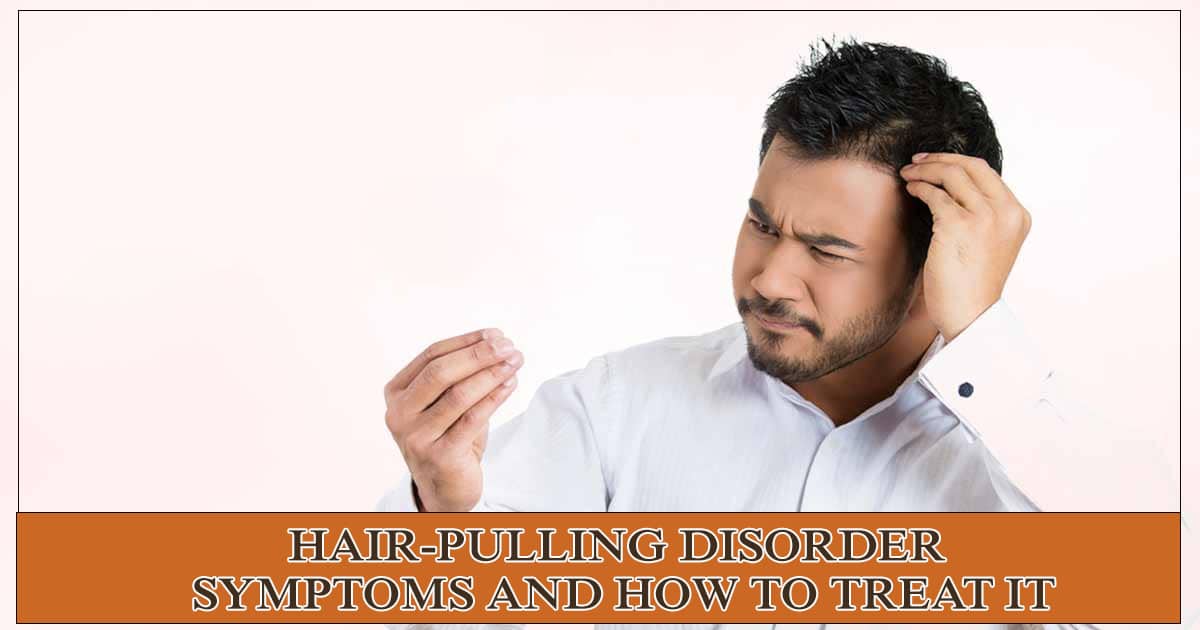Hair-Pulling Disorder – Symptoms and How to Treat it

Trichotillomania or hair pulling disorder is additionally known as a hair-pulling disorder. Hair pulling is a psychological issue, which includes recurrent, compelling desires to pull hair from the eyebrows, scalp, eyelids, and different regions of the body, in spite of repeated attempts to stop or diminish hair pulling.
Hair pulling can result in partial and complete removal of the eyelashes and eyebrows. Additionally, hair pulling from the scalp can bring about differing degrees of patches of hair loss. The subsequent hair fall and hair pulling results in trouble for the individual, further it may interfere with occupational and social working. For a few people, the signs of trichotillomania are reasonable, yet for other people, the symptoms can be totally overpowering.
What are the symptoms of hair pulling disorder or Trichotillomania?
The essential feature of hair pulling disorder or trichotillomania is repetitive pulling of an individual’s own hair. Hair pulling or Trichotillomania can happen in any area of the body in which hair develops. The most widely recognized locales incorporate the eyebrows, scalp, and eyelids. Less normal regions incorporate peri-rectal, facial, and pubic regions. Different symptoms can incorporate the accompanying noticeable hair loss, hair pulling causes weakness in occupational and social areas of functioning, repeated endeavors to diminish or stop hair pulling, a feeling of relief after pulling, an increasing feeling of tension before the hair pulling, or when trying to resist pulling, and pulling certain kinds of hair.
When to seek help from anyone?
On the off chance that you can’t quit pulling your hair and you encounter negative repercussions in your life, then it is essential to look for help. Trichotillomania or hair pulling disorder won’t leave without anyone else. It is a psychological wellness issue that requires treatment. You must visit your doctor in order to get proper treatment for this issue.
Treatment of hair pulling disorder or Trichotillomania
Treatment of hair pulling disorder or trichotillomania can be complicated for some persons. Additionally, most treatment choices require time and practice. People frequently attempt a few methodologies to adapt to their inclinations previously they discover something that works. There are numerous treatments to cure hair pulling disorder such as self-awareness training, cognitive treatment, and relaxation treatment. If you are experiencing excessive hair loss, then you should go for a hair transplant. You should avoid getting discouraged if the signs of hair pulling disorder come and go.
Cognitive treatment: This kind of treatment can enable individuals to investigate distorted beliefs identified with hair pulling.
Self-awareness training: Individuals figure out how to end up progressively mindful of their hair pulling designs by following when they force and specifying feelings and other vital data.
Relaxation training: This encourages individuals to figure out how to concentrate on and quiet their central nervous systems because of stress triggers.
Deep breathing training: Learning the best possible approach to take part in profound breathing helps enhance focus and relaxation.
Habit Reversal: This is frequently the essential treatment of hair pulling disorder. People figure out how to perceive circumstances where they are probably going to pull hair and substitute different behaviors. Numerous individuals use alarms, journalism, and other systems to build attention to triggers. Rather than pulling hair, an individual may substitute behaviors, for example, snapping a versatile band on the wrist and clenching fists.
